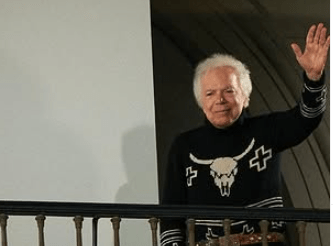With its timeless elegance and entrepreneurial legend, Ralph Lauren’s name frequently comes to mind when someone thinks of American fashion. The remarkable transformation of what started out as handmade neckties in the late 1960s into a $12.75 billion fortune by 2025 is evidence of the man’s unwavering faith in style, scale, and branding. Lauren has created a lifestyle that is both aspirational and uniquely American by cultivating desire through consistency rather than following trends.

By carefully diversifying his business beyond menswear to include furnishings, fragrances, and online stores, Ralph Lauren created a brand that appeals to people of all ages and backgrounds. Today, his business, Ralph Lauren Corporation, owns a wide range of brands, including Double RL, Polo Ralph Lauren, Purple Label, and Lauren Ralph Lauren. He is currently the largest individual shareholder in the company and the financial mastermind behind one of the fashion industry’s most resilient empires, holding 33 percent of its outstanding stock.
Ralph Lauren: Net Worth, Biography & Career Profile
| Attribute | Details |
|---|---|
| Full Name | Ralph Lifshitz (professionally known as Ralph Lauren) |
| Date of Birth | October 14, 1939 |
| Age | 85 |
| Nationality | American |
| Occupation | Fashion Designer, Founder of Ralph Lauren Corporation |
| Estimated Net Worth | $12.75 Billion (as of April 2025) |
| Primary Business | Ralph Lauren Corporation (NYSE: RL) |
| Share Ownership | 33% of RL Corp’s outstanding shares |
| Major Brands | Polo Ralph Lauren, Purple Label, Lauren Ralph Lauren, Double RL, American Living |
| Education | Dropout, City University of New York City College |
| Spouse | Ricky Lauren (since 1964) |
| Children | 3 – Andrew, David, Dylan Lauren |
| Awards & Honors | CFDA Lifetime Achievement (1992), Presidential Medal of Freedom (2021), Legion d’Honneur (2010) |
| Reliable Source | Forbes – Ralph Lauren Profile |
A Brand That Defined a Century and Dressed a Nation
Ralph Lauren has not only taken over store shelves in recent decades, but he has also influenced a cultural narrative that combines fantasy, elegance, and prep. Lauren’s early understanding of narrative branding is what makes his strategy so novel. He sold more than just clothing; he also sold stately homes, horseback rides, the Hamptons, and Ivy League schools. Like a filmmaker, he created a narrative where anyone could be the main character—as long as they purchased the shirt.
Lauren’s company became a lifestyle force through global retail expansion, remarkably successful licensing agreements, and strategic partnerships with department stores. In order to ensure accessibility without sacrificing cachet, he created a number of sub-brands catering to different demographics and price points, such as the mall-friendly Chaps and the exclusive Purple Label. Ralph Lauren achieved this by becoming both specialized and all-encompassing, which is especially advantageous in the rapidly changing fashion industry.
Digital Innovation and the Glamour of Real Estate
Ralph Lauren was quietly turning the website polo.com into a virtual flagship long before luxury brands fully embraced the internet. His decision proved to be incredibly effective and foresighted, as his digital footprint was already bringing in millions of dollars in online revenue by the early 2000s. Lauren’s business model significantly increased its resilience during retail slowdowns and economic downturns by incorporating e-commerce before it was trendy.
His reputation as an American tastemaker is further enhanced by his real estate and auto investments. His properties, which range from a sprawling ranch in Colorado to exquisite residences in Manhattan and Montauk, embody the essence of his brand: refinement with substance. More akin to an art exhibit than a garage, his renowned automobile collection includes rare Ferraris, Bugattis, and Jaguars.
Leadership, Family, and an Enduring Future
Even though Lauren resigned as CEO in 2015, her position as Executive Chairman and Chief Creative Officer still influences the company’s visual identity. Lauren’s close ties to her family’s business are reminiscent of European luxury dynasties. His daughter Dylan has created her own prosperous business with Dylan’s Candy Bar, and his son David is the Vice Chairman and Chief Branding Officer. It’s a legacy that aims to develop as well as endure.
Lauren maintains his brand’s heritage roots and future-proofness by concurrently encouraging internal leadership and external innovation. Even in his mid-80s, Lauren is surprisingly well-positioned to navigate the broader shift in luxury retail, which is reflected in the company’s continued shift toward sustainability, inclusive sizing, and digital experiences.
Cultural Honors and a Durable Heritage
Lauren’s designs have left their mark on film history, from redefining Americana in Annie Hall to outfitting The Great Gatsby in 1974. His impact is not limited to red carpets and runways; it also permeates everyday events like weddings, job interviews, and graduations, where feeling confident means looking put together.
Lauren’s charitable endeavors are equally admirable. He has made significant contributions to disaster relief, education, and cancer treatment through the Ralph Lauren Corporate Foundation. For example, his Pink Pony campaign has had a significant influence on increasing funding and awareness for research on breast cancer.
